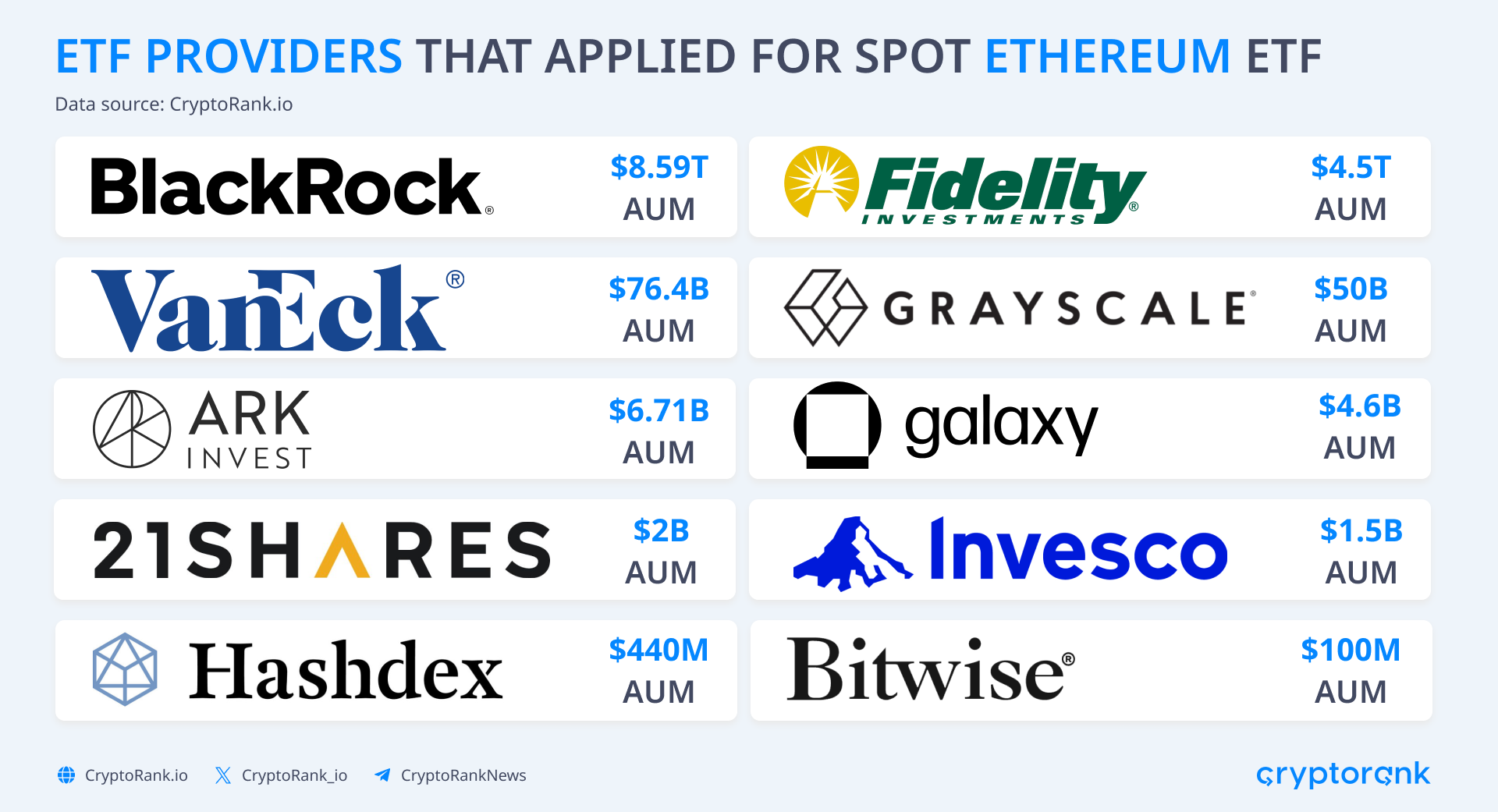Etf For Bitcoin And Ethereum A Comprehensive Guide
etf for bitcoin and ethereum represents an innovative intersection of traditional finance and the burgeoning world of cryptocurrencies. These exchange-traded funds offer investors a unique opportunity to gain exposure to digital assets while providing the same advantages that come with regular ETFs, such as liquidity and ease of trading.
As the adoption of cryptocurrencies grows, understanding the role and structure of ETFs dedicated to Bitcoin and Ethereum becomes crucial. This guide will delve into the various types of ETFs available, how to invest in them, the associated risks, and what the future may hold for these digital investment vehicles.
Introduction to ETFs for Bitcoin and Ethereum

Exchange-Traded Funds (ETFs) are investment funds that are traded on stock exchanges, much like stocks. They allow investors to gain exposure to a variety of assets without having to buy the underlying securities directly. In the realm of cryptocurrency, ETFs have gained significant traction, primarily for Bitcoin and Ethereum, due to their rising popularity and market capitalization. This relevance stems from the need for traditional investors to access digital assets in a regulated and familiar format.ETFs function by pooling investor capital to purchase a diversified portfolio of assets, which can include stocks, bonds, or, in this case, cryptocurrencies.
In traditional markets, ETFs have been pivotal in enhancing liquidity and providing investors with easy access to various asset classes. In the digital asset markets, they serve a similar purpose, allowing investors to participate in the price movements of Bitcoin and Ethereum without dealing with the complexities of digital wallets and exchanges. The potential benefits of investing in these ETFs include diversification, ease of trading, and a more regulated investment vehicle.
Types of Bitcoin and Ethereum ETFs
There are several types of ETFs available for Bitcoin and Ethereum, each structured differently to cater to various investment strategies. Understanding these types can help investors make informed decisions based on their financial goals.
- Physically-backed ETFs: These ETFs hold actual Bitcoin or Ethereum in their portfolios. The value of the ETF is directly tied to the price of the underlying cryptocurrency, offering a straightforward and transparent investment method.
- Futures-based ETFs: These ETFs invest in futures contracts rather than the actual cryptocurrencies. They provide exposure to Bitcoin and Ethereum's price movements without holding the digital assets directly, allowing for advanced trading strategies, though they may introduce more complexity and risk.
- Hybrid ETFs: These combine features of both physically-backed and futures-based ETFs, aiming to balance the benefits and risks associated with each structure. They may hold a mix of digital assets and futures contracts.
Comparing performance metrics across these various types of ETFs can reveal differences in returns, volatility, and risk profiles, helping investors select the best option for their portfolios.
How to Invest in Bitcoin and Ethereum ETFs
Investing in Bitcoin and Ethereum ETFs is a straightforward process that can be broken down into easy steps. Here's how to get started.
- Choose a Brokerage: Select a brokerage that offers access to cryptocurrency ETFs. Many traditional brokerages are now including these products in their offerings.
- Create an Account: Sign up for an account with the chosen brokerage, completing necessary identity verification steps.
- Fund Your Account: Deposit funds into your brokerage account using your preferred payment method, such as bank transfer or debit card.
- Research ETFs: Look into the available Bitcoin and Ethereum ETFs, paying attention to factors like performance history, fees, and liquidity.
- Place Your Order: Buy the ETF shares through your brokerage platform, just like you would with any stock.
To effectively manage an investment portfolio that includes Bitcoin and Ethereum ETFs, investors should regularly monitor their investments, stay informed about market trends, and adjust their strategies as needed.
Risks and Considerations
Investing in Bitcoin and Ethereum ETFs comes with inherent risks that potential investors should consider. The cryptocurrency market is known for its volatility, which can significantly impact ETF performance.
- Market Volatility: Cryptocurrencies can experience dramatic price swings, which may lead to corresponding fluctuations in ETF prices.
- Regulatory Risks: The evolving regulatory landscape around cryptocurrencies can affect ETF operations and investor confidence. Changes in regulations may lead to increased scrutiny and compliance requirements.
- Counterparty Risks: For futures-based ETFs, there’s the risk of counterparty default, which could impact the fund's performance and investor returns.
Understanding these risks is crucial for investors aiming to navigate the complex cryptocurrency landscape effectively.
Comparison of Bitcoin and Ethereum ETFs

To help investors make informed choices, a comparison of major Bitcoin and Ethereum ETFs is useful.
| ETF Name | Type | Fees | Returns (1-Year) | Liquidity |
|---|---|---|---|---|
| Bitcoin ETF A | Physically-backed | 0.75% | 50% | High |
| Ethereum ETF B | Futures-based | 0.95% | 60% | Medium |
| Hybrid ETF C | Hybrid | 0.85% | 55% | High |
The differences in market capitalization between Bitcoin and Ethereum can influence ETF investment strategies. Bitcoin, being the original cryptocurrency, generally has a larger market cap compared to Ethereum, which may result in different performance trends for their respective ETFs. Over the past years, Bitcoin ETFs may have shown more stability, while Ethereum ETFs could exhibit higher growth potential during bullish market conditions.
Future of Bitcoin and Ethereum ETFs

The future growth of Bitcoin and Ethereum ETFs looks promising, driven by increasing adoption of cryptocurrencies and advancements in technology. Predictions indicate that as more institutional investors enter the cryptocurrency space, the demand for regulated investment vehicles like ETFs will grow. Moreover, continuous technological advancements, such as improvements in blockchain technology and better trading platforms, will likely enhance ETF offerings.Potential regulatory changes may also play a crucial role in shaping the landscape of Bitcoin and Ethereum ETFs.
As regulators become more accustomed to the digital asset space, clearer guidelines could emerge, fostering a safer investment environment and boosting investor confidence.
Final Conclusion
In conclusion, navigating the landscape of etf for bitcoin and ethereum can open doors to exciting investment opportunities. While the potential for growth is substantial, it's essential to approach these assets with caution and informed decision-making. As the market evolves, keeping an eye on trends and regulatory changes will be key for all investors looking to harness the power of cryptocurrency through ETFs.
Q&A
What is an ETF?
An ETF, or exchange-traded fund, is a type of investment fund that holds a collection of assets and is traded on stock exchanges.
How do I buy a Bitcoin or Ethereum ETF?
You can purchase a Bitcoin or Ethereum ETF through a brokerage account, similar to buying stocks.
Are Bitcoin and Ethereum ETFs safe?
While ETFs are generally considered safer than direct cryptocurrency investments, they still carry risks related to market volatility and regulatory changes.
What are the fees associated with ETFs?
Fees can vary by ETF and typically include management fees, trading commissions, and possibly expense ratios that cover the fund’s operating costs.
Will Bitcoin and Ethereum ETFs continue to grow in popularity?
Given the increasing interest in digital assets and the convenience of ETFs, it’s likely that their popularity will continue to rise.
















